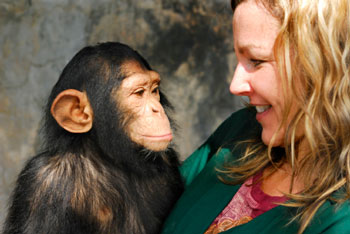Heads I win, tails you lose
The power of the paradigm

Kenneth Miller is Professor of Biology at Brown University, Rhode Island, and a prominent critic of creationism and the intelligent design movement. He has supported court actions against schools that seek to protect children from evolutionary indoctrination, even appearing as a witness for the plaintiffs,1 and regularly speaks in defence of the teaching of evolution as a scientifically proven fact. A Roman Catholic, he is a theistic evolutionist.
A few years ago, Miller gave a lecture at Case Western Reserve University entitled, “The Collapse of Intelligent Design. Will the next Monkey Trial be in Ohio?”2 In this, he freely lambasted all who would question the Darwinian paradigm. Most of the lecture was about politics, but some time was also given to scientific issues. Particularly, he made much of recent studies of human and chimp DNA and argued that this provided irrefutable evidence of evolution. As I listened to this, I became open-mouthed, almost in disbelief, at the incredibly unscientific nature of his claim. Two pairs of human chromosomes had been found to be fused, he said, providing clear evidence of our shared ancestry with apes.3
Chromosomes are packages of DNA, wound around proteins called histones. Humans have 23 chromosome pairs, as we inherit 23 chromosomes from our father and 23 from our mother. Chimps inherit 24 chromosomes from each parent and have 24 chromosome pairs. Although far from being beyond doubt, a good case can be made that humans did, indeed, have 24 chromosome pairs originally, and that chromosome fusion has occurred, resulting in our now having only 23. For the sake of the argument, let us concede that this is true.4
According to Miller, there are only two possible explanations for this. The first is that we share a common ancestor with chimps and that, during the course of evolution, chromosome fusion has taken place. The second is that the creator/designer made humans with chromosomes which had the appearance of having been fused at some time in the past, when in fact this never happened. The second explanation, he argued, is ridiculous, thus showing the first to be correct.

For someone who prides himself as a scientist and critical thinker, Miller’s argument beggars belief. Even a child could see the fallacy of it. If, in Miller’s view, it is reasonable to believe that the chromosomes became fused in a small population of half-ape/half-humans a few million years ago, why is it not reasonable to believe that this occurred in a small population of actual humans a few thousand years ago? This could have happened very early on in human history, soon after Adam and Eve were expelled from the Garden of Eden, or in a small, isolated group from which Noah and his family were drawn prior to the Flood.
Professor Miller, of course, is a very capable and knowledgeable scientist. How, then, could he make such a basic error? The answer, surely, lies in the ‘Power of the paradigm.’ If it is accepted that ‘evolution is a fact’ then data will always be interpreted according to this belief—irrespective of whether there is a valid alternative interpretation. If humans had been found to have 24 chromosome pairs, this would have been understood as evidence for common ancestry with apes because apes also have 24. Since humans actually have 23, it is understood that this provides evidence that evolution resulted in ape chromosomes being fused. For the evolutionists, then, it’s ‘heads I win, tails you lose’.
References
- Selman v. Cobb County, 2005 and Kitzmiller v. Dover Area School District, 2005. Return to text.
- This was given on 3 January 2006 and can be viewed at http://www.youtube.com/watch?v=JVRsWAjvQSg. Return to text.
- Ref. 2, beginning at 0:35:10. Return to text.
- Sodera, V., One small speck to man—the evolution myth, 2nd edn, ch. 12, Vij Sodera Productions, 2009. Return to text.




Readers’ comments
Comments are automatically closed 14 days after publication.